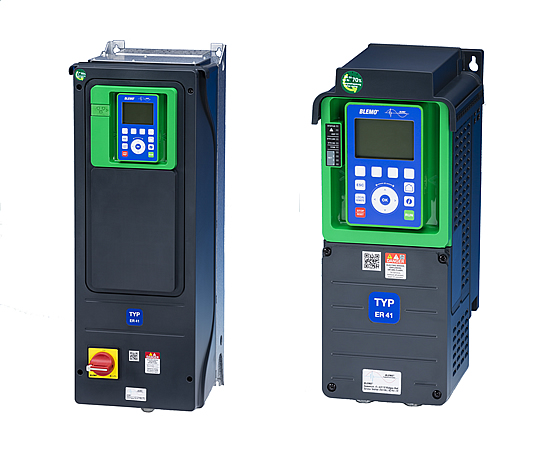- info@blemo.com
- 06106-8295-0
Menu

A variable frequency drive or frequency inverter is a type of motor control that drives an electric motor by varying the frequency and voltage of its power supply. In addition, it is able to control engine start-up and shut-down during starting and stopping, respectively.
Even though the drive controls the frequency and voltage of the power supplied to the motor, we often refer to this as speed control because it results in an adjustment of the motor speed.
There are many reasons why we should adjust the engine speed.
Examples:
In addition, today’s AC drives integrate networking and diagnostic capabilities to better control performance and increase productivity. Energy saving, intelligent motor control and the reduction of peak current consumption are therefore three good reasons to choose a frequency inverter as the control system in any motor-driven system.
The most common applications of a frequency inverter are the control of fans, pumps and compressors. These applications account for 75 % of all drives operating worldwide.
Soft starters and mains operated contactors are other, less sophisticated types of motor control. A soft starter is a semiconductor device and allows a smooth ramp-up to full speed when starting an electric motor.
A line-powered contactor is a motor control that applies full line voltage to an electric motor.

BLEMO® has specialized as a manufacturer in frequency converters and soft starters. You receive an extremely high-quality frequency inverter that is individually tailored to your requirements. Every single frequency inverter undergoes comprehensive testing before leaving the factory. Our experts focus on every detail of drive optimization and are always at the cutting edge of technology. The latest developments often go to our account. BLEMO® has a wide range of frequency inverters and softstarters, but you get much more than the frequency inverter. You have access to our application know-how and various maintenance services to keep your systems running optimally throughout the entire life cycle of your frequency converters.
We offer you the best possible components and full flexibility so that you can tailor the system performance exactly to your application. An important aspect of this flexibility is the ability to use your frequency inverters with all common motor technologies. This allows considerable savings on spare parts held in stock and on retrofits.
What is the main advantage of using frequency converters?
A frequency inverter can vary the power output according to the energy demand of the driven device, thus saving energy and optimizing power consumption.
The frequency converter can drastically reduce energy consumption compared to direct operation on the mains, where the motor runs at full speed regardless of demand. The use of a frequency converter typically achieves electricity or fuel savings of 70% %. The roll-on effect means that the use of variable speed drives also reduces NOx emissions from the systems in which they are installed and improves their carbon footprint.
What is the difference between a frequency converter, an AC drive and a speed-controlled drive?
There isn’t one. All these names refer to the same device.
Frequency inverter types
There are many different types of frequency converters as they are widely used in the industry. There are both single-phase and three-phase frequency converters for a wide range of applications. Differences in each type of frequency converter include the various methods of frequency and voltage control and harmonic mitigation technologies.
The three main variable frequency generation techniques used in frequency converters are pulse width modulation (PWM), current source inverters and voltage source inverters. PWM technology is the most common. PWM technology requires that the inverter power electronics of the frequency converter – transistors or insulated gate bipolar transistors (IGBT) – generate the correct voltage level by constantly switching on and off. By controlling and varying the pulse width, pulse width modulation changes the output frequency and voltage
Address:
Siemensstrasse 4, 63110 Rodgau/Dudenhofen
Opening hours:
Mon – Thurs from 8 am – 5 pm and Fri from 8 am – 4 pm